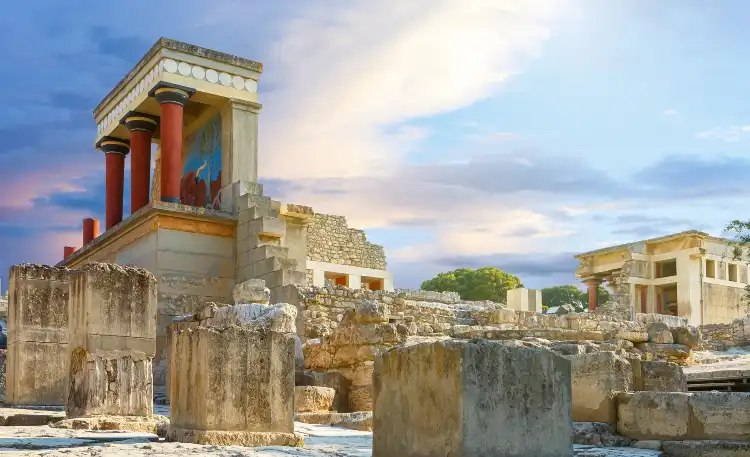
搜尋伊拉克利翁州設有私人泳池的飯店
選擇住宿日期來查看最新價格及空房情況
向上滑看更多
熱門篩選:
飯店星級
≤2345
房客評分
超棒 9+佳 8+不錯 7+尚可 6+伊拉克利翁州設有私人泳池的 4 間飯店
選擇住宿日期,查看當前最優惠價格。
最熱門
最低價格
距離遠近
最受好評
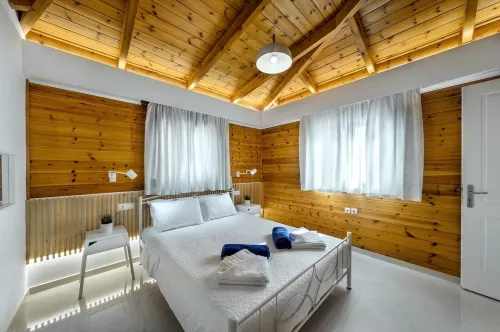
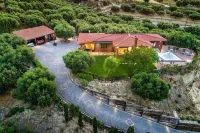
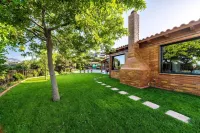
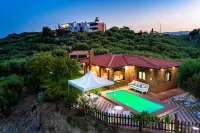

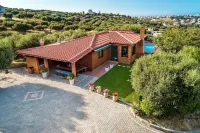
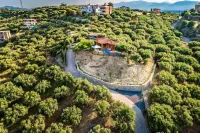
83
Sofia's Place
在伊拉克利翁州的飯店
索菲亞之家帶私人泳池位於赫拉克利翁,距離伊拉克利翁港和伊拉克利翁考古博物館不到 10 分鐘車程。 此度假屋距離克諾索斯皇宮 2.9 英里(4.7 公里),距離尼科斯·卡贊扎基斯博物館 1.3 英里(2 公里)。您可到花園欣賞美景,還可利用免費 WiFi和燒烤爐等服務和設施。飯店提供免費自助停車。飯店的 3 間客房定能讓您在旅途中找到家的舒適。
滿意
9.0/10
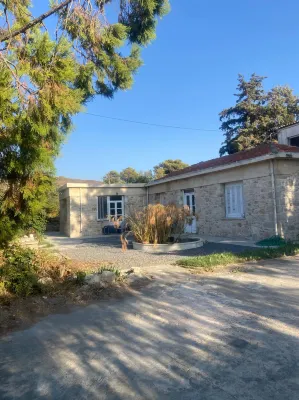
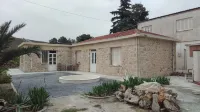





18
在伊拉克利翁州的飯店
The property and buildings that make up the creative centre known now as Villa Phyllia has a history that spans modern times back to the late nineteenth century. Then a teenager , Emmanuel Akoumianakis, arrived barefoot at Knossos and presented himself for employment. Emmanuel had walked from his home villa of Gerakari to escape a vendetta that his family were facing.
Self-survival took him to Knossos where the news was that the excavations conducted there required fit workers for the grueling work of revealing the palace of King Minos – the heart of the Minoan civilisation. Emmanuel did very well and was rapidly promoted by Arthur Evans who appreciated the young man’s ability and enthusiasm. It was not long before ‘Manolis’ became Evans’ foreman and right-hand man responsible for managing the large workforce that had grown as the archaeological site became known internationally.
As a consequence of his success, Akoumianakis could afford to buy land in the area – vineyards, olive groves and a barn for sheep on the hillside overlooking the palace -the site that has now become ΦΙΛΙΑΣ (Villa Phyllia), as it passed down the generations of the Akoumianakis family to his daughter Phyllia, her son Peter and to his children, Oliver and Eva.
Phyllia's date of birth was always a mystery to the family. She was in fact born in 1921 not 1925 as shown in her passport. She was slightly older than her husband John. So uncle Micky Akoumianakis arranged a minor modification of her birth certificate to make her five years younger! If only it was so simple today.
All we have is a small blurred photograph of Phyllia dancing arm in arm with two girls. It reminds me of a fresco or an ancient vase . A smiling happy young woman. She is wearing boots – according to my family the first girl in Knossos who did so.
And the first girl to ride a bicycle. Her early life in Knossos Crete was bliss. She spoke about the gardens of the villa Ariadne next to her home – where the British archeologists lived. A paradise as she called it. Flowers,
查看空房情況
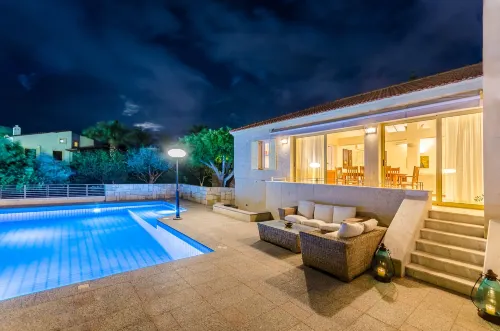

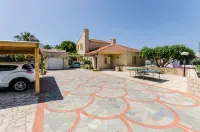



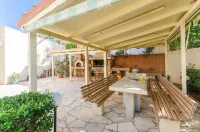
59
Villa Anna Maria 3 Bedroom Private Pool
在伊拉克利翁州的飯店
這個別墅位於赫拉克利翁,距離伊拉克利翁港和伊拉克利翁考古博物館不到 5 分鐘車程。 此別墅距離克諾索斯皇宮 2.7 英里(4.4 公里),距離馬諾思哈其戴克斯劇院 0.3 英里(0.5 公里)。享受季節性開放的室外游泳池等度假設施,或者到屋頂露台欣賞美景。此別墅的其他特色包括免費 WiFi和燒烤爐。此別墅配有空調,提供壁爐和私人游泳池,讓您可以盡情放鬆享受。廚房配備了烤箱、爐灶和微波爐。提供免費無線網絡,方便您與朋友保持聯繫,另配備 35 英寸平板電視,可滿足您的娛樂需求。便利服務設施包括電話、獨立的起居區和茶具/咖啡用具。
查看空房情況

您可能更喜歡
含早餐的伊拉克利翁州飯店配有雙床房的伊拉克利翁州飯店配有 1 張雙人床的伊拉克利翁州飯店具備泳池的伊拉克利翁州飯店可免費取消的伊拉克利翁州飯店
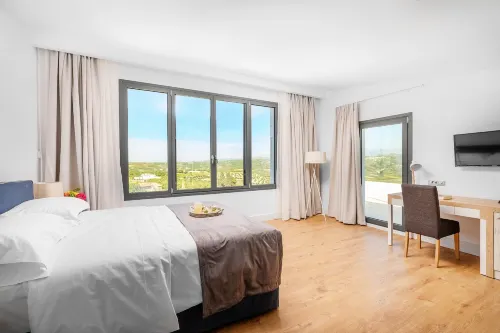




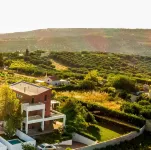

50
5Star Villa Harmony w Heated Pool, Gym, Spa, Sauna
在伊拉克利翁州的飯店
這個別墅位於赫拉克利翁,靠近海灘,距離伊拉克利翁港和克諾索斯皇宮不到 15 分鐘車程。 此別墅距離伊拉克利翁考古博物館 6.3 英里(10.1 公里),距離赫爾索尼蘇斯港 18.1 英里(29.1 公里)。不要錯過室外游泳池、熱水浴缸和桑拿等眾多度假設施。此別墅的其他設施包括免費 WiFi和燒烤爐。特色服務/設施包括快速退房、行李寄存和洗衣設施。飯店提供免費自助停車。這個有著特色裝修的別墅配備室內私人熱水浴缸和智能電視,讓您可以盡情放鬆享受。您的精選舒適床墊床配有埃及棉床單。廚房配備了大冰箱、烤箱和爐灶。提供免費無線網絡,方便您與朋友保持聯繫,此外還配有衛星頻道,可滿足您的娛樂需求。
超棒
1 則評論
10.0/10

熱門伊拉克利翁州豪華飯店
查看全部
探索我們為您精選的伊拉克利翁州豪華飯店,誠摯邀請您下次入住

No.
1
9.6/10
119 則評論GDM 梅加隆歷史紀念碑飯店
伊拉克利翁州的飯店
"服務很好""房間不錯"
選取日期來查看價格
No.
2
9.1/10
56 則評論空靈白度假村
伊拉克利翁的飯店
"Good Location"
選取日期來查看價格
No.
3
9.5/10
51 則評論迪馬吉奧豪華飯店&SPA
伊拉克利翁的飯店
"Good Location"
選取日期來查看價格
No.
4
9.1/10
4 則評論Rocca a Mare 赫拉克利翁- 翰悅閣飯店
伊拉克利翁的飯店
"Good Location"
選取日期來查看價格常見問題
伊拉克利翁州有哪些飯店提供美味早餐?
伊拉克利翁州有哪些飯店提供泳池?
亞奎拉亞特蘭蒂斯飯店 (起價 £63)、卡普西斯道夫赫拉克利翁飯店 (起價 £51)及Rocca a Mare 赫拉克利翁- 翰悅閣飯店 (起價 £73)都是設有泳池的飯店,非常適合喜歡游泳的旅客入住!
伊拉克利翁州有哪些飯店提供高評價的 Spa 服務?
伊拉克利翁州有哪些飯店優惠活動?
Trip.com 不定期推出多樣的優惠及折扣,新用戶還可享訂房 8% 優惠,立即前往優惠活動頁面查看最新資訊。
伊拉克利翁州克諾索斯王宮附近有哪些推薦的住宿?
伊拉克利翁州有哪些必去景點?
伊拉克利翁州有不少代表性景點,例如克諾索斯王宮。
本週末伊拉克利翁州飯店平均房價大約多少?
本週末伊拉克利翁州飯店平均房價:
3 星級飯店:約£63
4 星級飯店:約£100
5 星級飯店:約£136
3 星級飯店:約£63
4 星級飯店:約£100
5 星級飯店:約£136
平日入住伊拉克利翁州飯店平均房價大約多少?
平日入住伊拉克利翁州飯店平均房價:
3 星級飯店:約£62
4 星級飯店:約 £99
5 星級飯店:約£135
3 星級飯店:約£62
4 星級飯店:約 £99
5 星級飯店:約£135